Syn.: Acrostichum polypodioides L., Marginaria polypodioides (L.) Tidestrom, Polypodium polypodioides (L.) Watt
Family: Polypodiaceae J. Presl et C. Presl
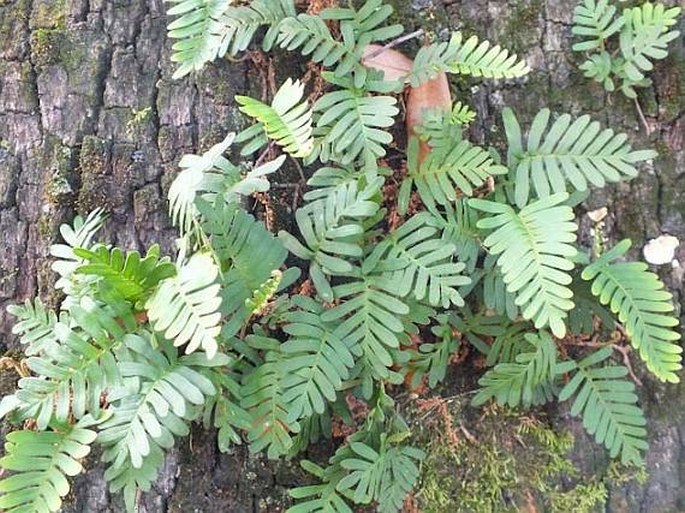
Distribution: Delaware south to Florida, west to Texas and north to Illinois, throughout tropical America (from Mexico through western Brazil to Argentina), and eastern and southern Africa. In these areas it is recognized in 6 varieties, 2 varieties in North America – P. p. var. michauxiana (southeastern part of US) and P. p. var. erythrolepis (western Texas, northern Mexico).
Ecology: Grows epiphytically on branches of large trees like Live Oak (Quercus virginiana), on large Magnolias, rocks, fences and along streams. During dry periods the fronds curl up appearing dead but as soon as moisture is available again it resumes its growth (hence resurrection).
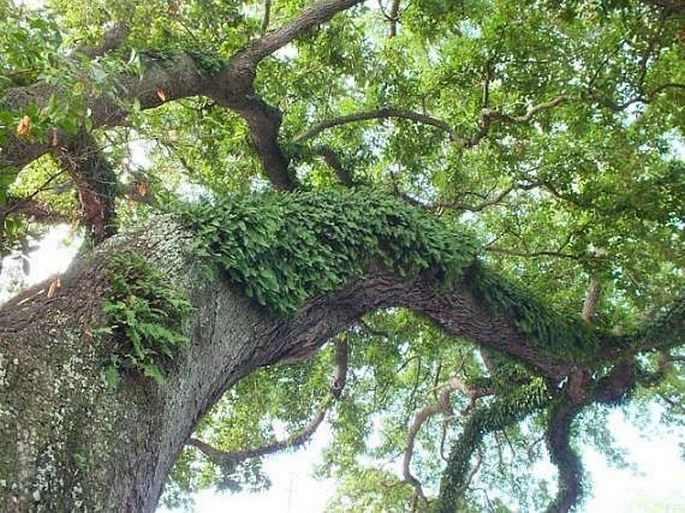
Description: Smallish, stiff fern, from long, slender, multi branched, creeping rhizomes, 1–2 mm thick, scaley, anchoring the plant to the host’s rough surface. Leaves 15–25 cm long, 7–10 cm wide, deeply pinnatifid, green, lower surface covered with peltate scales; sori submarginal, round, without indusium.
Note: Resurrection fern is unique for its ability to lose up to 75 % of its moisture without damage. In New Orleans it is noticeable that during dry periods these plants appear dead on some trees and in full life on nearby trees which are being watered by water sprinklers.
In 1979 this fern was taken into space to watch its resurrection in zero gravity.
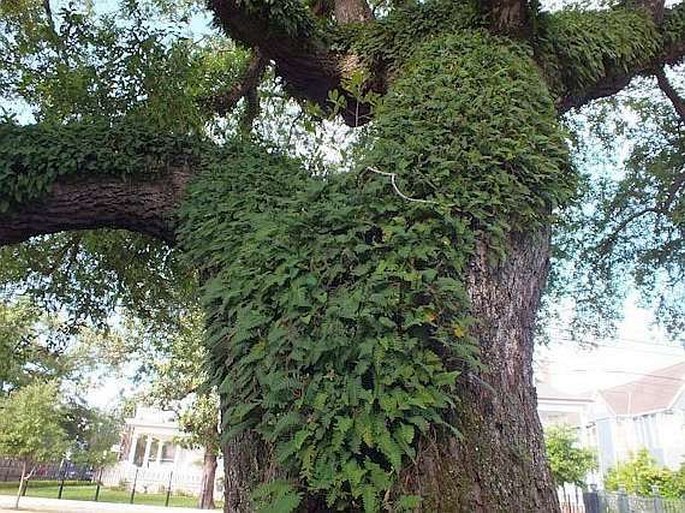
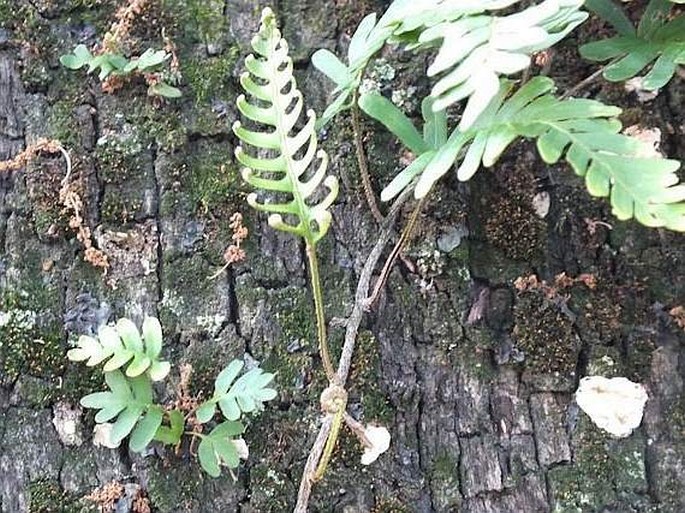
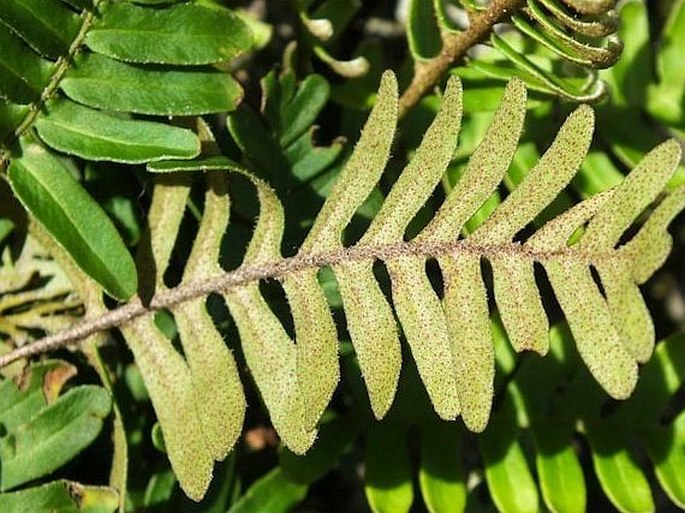
These images were taken in USA, Louisiana, New Orleans (May 2014).


